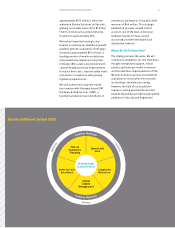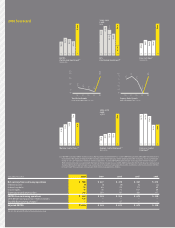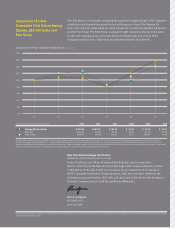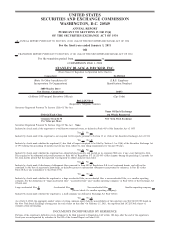Black & Decker 2010 Annual Report Download - page 15
Download and view the complete annual report
Please find page 15 of the 2010 Black & Decker annual report below. You can navigate through the pages in the report by either clicking on the pages listed below, or by using the keyword search tool below to find specific information within the annual report.
FORM 10-K
PA RT I
ITEM 1. BUSINESS
1(a) GENERAL DEVELOPMENT OF BUSINESS
(i) General. The Stanley Works (“Stanley”) was founded in 1843 by Frederick T. Stanley and incorporated in
1852. Stanley is a diversified global provider of hand tools, mechanical access solutions and electronic security
solutions. Stanley»is a brand recognized around the world for quality and value.
On March 12, 2010, Stanley completed a merger (the “Merger”) with the Black & Decker Corporation
(“Black & Decker”). Black & Decker, which was incorporated in Maryland in 1910, is a leading global
manufacturer and marketer of power tools and accessories, hardware and home improvement products, and
technology-based (engineered) fastening systems. Black & Decker enjoys worldwide recognition of its strong
brand names and a superior reputation for quality, design, innovation and value. In connection with the Merger,
Stanley changed its name to Stanley Black & Decker, Inc. Throughout this document, references to the
“Company” refer to Stanley Black & Decker, Inc. The Company’s consolidated financial statements include
Black & Decker’s results of operations and cash flows from March 13, 2010.
As detailed in Note E, Merger and Acquisitions, of the Notes to the Consolidated Financial Statements in
Item 8, Black & Decker stockholders received 1.275 shares of Stanley common stock for each share of
Black & Decker common stock outstanding as of the merger date. Outstanding Black & Decker equity awards
(primarily stock options) were similarly exchanged for Stanley equity awards. After the exchange was
completed, pre-merger Stanley shareowners retained ownership of 50.5% of the newly combined company.
Based on the $57.86 closing price of Stanley common stock on March 12, 2010, the aggregate fair value of
the consideration transferred to consummate the Merger was $4.657 billion.
Management believes the Merger is a transformative event bringing together two highly complementary
companies, with iconic brands, rich histories and common distribution channels, yet with minimal product
overlap. The Merger also enables a global offering in hand and power tools, as well as hardware, thus
enhancing the Company’s value proposition to customers. Management believes the value unlocked by the
anticipated $425 million in cost synergies, expected to be achieved by the end of 2012, will help fuel future
growth and facilitate global cost leadership. This updated cost synergy estimate represents a $75 million
increase from the original $350 million by March, 2013 at the time of the Merger. The cost synergy drivers
are: business unit and regional consolidation (management, sales force and shared services integration),
$145 million; purchasing (materials, freight etc.) $100 million; corporate overhead $95 million; and manufac-
turing and distribution facility consolidation, $85 million. The Company is ahead of plan on the integration of
the two companies and realized $135 million of the cost synergies in 2010, which is $45 million more than
originally forecasted for the nine month period that followed the merger. An additional $165 million of cost
synergies are anticipated in 2011, and an incremental $125 million in 2012 to achieve the total cumulative
$425 million in cost synergies in 2012. Of the $330 million in cost synergies pertaining to operations (all but
the $95 million of corporate overhead), the benefit by segment is estimated to be 70% in CDIY, 20% in
Security (mechanical access solutions), and 10% in Industrial. Management estimates there will be an
additional $200 million in total costs, incurred over the next two years, to achieve these synergies from the
Merger.
Additionally, it is projected that revenue synergies from the Merger will be in the range of $300 million to
$400 million by 2013, which implies a benefit of $0.35 — $0.50 of earnings per diluted share. Revenue
synergies are expected to add an incremental 50 basis points (approximately $50 million) to 2011 revenue
growth and have a modest earnings impact, with remaining revenue synergies to be achieved in 2012 and
2013. The anticipated revenue synergies will come from: geographic expansion into Latin America and other
emerging markets, leveraging pre-existing infrastructure (30%); channel and cross-selling of existing products,
such as the sale of power tools through the Company’s industrial and automotive repair distributors (30%);
brand expansion, i.e. utilizing the array of powerful brands in different product categories and channels and
2
























